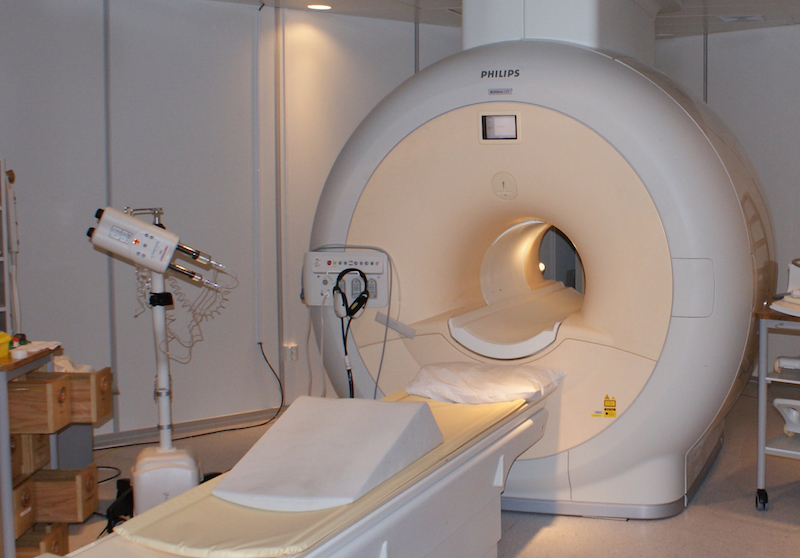
Op-ed: Private MRIs won’t endanger health care
The following is an op-ed written by Gregory Mason, associate professor of economics at the U of M. It was originally published in the Winnipeg Free Press on May 3, 2017.
What do pizza joints and MRIs have in common?
Recently, while driving, I passed three pizza places within three blocks. The first was a buzzing operation, packed with diners and others waiting for pickup orders. The second was less busy, while the third was empty, with just the owner forlornly looking at his phone.
The market rewards those who get the business recipe right and punishes those who get it wrong. In the first restaurant, the lineups may encourage the owner to make a menu change to introduce higher prices. In the second pizza joint, the owner offers two-for-one deals trying to build business. And at the third place, the owner may try all manner of promotion and cost-cutting in a vain effort to forestall bankruptcy and equipment auctions.
When it comes to pizza, we accept the impartial and baleful actions of the market. Rising prices signal success and poor sales portend failure. No one would imagine that government should own a few pizza places, offer slices for free, limit the choice to a cheese, pepperoni and veggie, and then require us to place our orders weeks in advance.
When it comes to MRI imaging, that is what we do.
The auditor’s report on MRI scheduling has been great sport for the media. The image of million-dollar athletes elbowing grandma out of the queue is poor optics indeed, but largely mythology.
In 2016, the 11 MRI scanners in the province completed 72,000 scans, or about 6,000 a month. The few “queue jumpers” identified by the auditor would have had a negligible impact on anyone’s wait time. Note, also, that those admitted through emergency, including hockey players injured in a game, always receive immediate MRIs if medical staff determine they are necessary.
The average wait for an MRI in Manitoba is 24 weeks, with the longest at St. Boniface General Hospital, at 29 weeks, and the shortest at Brandon General Hospital, at an average of 12 weeks. Of the 11 scanners in Manitoba, nine are in Winnipeg and two are in southern Manitoba (Brandon and Morden-Winkler). There are no scanners in the north or other remote areas.
MRI scans are diagnostic and a prelude to treatment. Therefore, when it comes to an MRI scan, let us no longer speak of “wait times.” We need to reframe the issue as “treatment delay times.”
MRI scanners are costly to install and operate. A premium scanner is a complex piece of electronics requiring a special facility and trained staff, with current prices around US$1 million.
The default assumption in Canada is that government needs to own and operate MRIs to allow universal access at zero price to the patient. However, while this eliminates the financial cost on patients, it imposes a time cost. Wait times are the dirty little secret of Canadian health care.
But, just for a moment, let’s do a thought experiment and suppose the Manitoba government allowed entrepreneurs to start their own MRI services. Financing and operating an MRI would be well within the capabilities of doctors in group practice who have financed infrastructure such as X-ray facilities. The business process is like starting a pizza restaurant.
Now who pays? It can be the patient or the insurer, which in Canada is the government. So, once we know the cost of an MRI scan provided by a private clinic, the government can simply contract for the services and the patient pays nothing.
The beauty of this idea is that the private entrepreneurs, and not the taxpayers, bear the risk of constructing the new private clinic. If they make a mistake, then, like the owner of the failing pizza joint, the investors lose. However, if they succeed, they make money, treatment delay times fall and the patient benefits.
What we need to know is the market price for a scan.
Fortunately, we have an experiment that tells us. A new MRI service has just opened in Pembina, N.D., one hour south of Winnipeg. This is surely not to serve this bustling metropolis of 600 people — the owners are aiming directly at the delays for MRI scans in Manitoba. Maybe they will also serve pizza.
For C$1,000, this new facility promises to get you in within five business days. I know, I called.
So, any new private MRI clinic in Manitoba could not charge much more than this price without losing business to the facility in North Dakota. My bet is that many Manitoba patients will make the trip and pay the fee for the scan so they can start treatment soon rather than accept a delay of six months.
Manitoba Health is undoubtedly undertaking studies on how to shorten wait times and eliminate queue-jumping. But by doing nothing, if enough Manitobans pay the fee and make the drive to North Dakota, treatment delay times will fall and our health planners will be able to claim success without risking policy change or money. But then we will have exported jobs and expertise to the United States that could have remained in Manitoba.
We can and should allow some privatization of MRI services. This will not imperil the soul of the Canadian health care.






